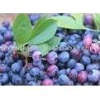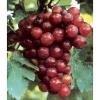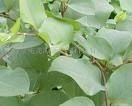- Plant Extract[10]
- Food Additives[3]
- Organic Intermediate[1]
- Green Tea[1]
- White Tea[1]
- Healthcare Supplement[4]
- Herbal Medicine[10]
- Pharmaceutical[2]
- Contact Person : Ms. Wang Sunny
- Company Name : Changsha Organic Herb Inc.
- Tel : 86-731-82739238
- Fax : 86-731-82739211
- Address : Hunan,changsha,A301 International Enterprise Center, No. 188, Huanbao Middle Rd,Yuhua District
- Country/Region : China
- Zip : 410016
Related Product Searches:Chlorogenic Acid,High Quality,Chlorogenic Acid, eucommia leaves extract
Chlorogenic Acid
Chlorogenic acid, an ester of caffeic acid and quinic acid, is a major phenolic compound in coffee, but is also found widespread in plants and can be isolated from the leaves and fruit This compound, long known as an antioxidant, also slows the release of glucose into the bloodstream after a meal.
Biological importanceThis acid is an important factor in plant metabolism. It is also an antioxidant and an inhibitor of the tumor promoting activity of phorbol esters; at concentrations as high as 100 µg/L, does not inhibit the 5-lipoxygenase activity of ionophore-stimulated human polymorphonuclear leukocytes.
Chlorogenic acid and caffeic acid are antioxidants in vitro and might therefore contribute to the prevention of Type 2 Diabetes Mellitus and cardiovascular disease .
Chlorogenic acid is an important factor in plant metabolism. It is also an antioxidant and an inhibitor of the tumor promoting activity of phorbol esters.Chlorogenic acid, at concentrations as high as 100 um, does not inhibit the 5-lipoxygenase activity of ionophore-stimulated human polymorphonuclear leukocytes.
Chlorogenic acid, an ester of caffeic acid and quinic acid, is a major phenolic compound in coffee; daily intake in coffee drinkers is 0.51 g. Chlorogenic acid and caffeic acid are antioxidants in vitro and might therefore contribute to the prevention of cardiovascular disease.
Chlorogenic acid has been proven in animal studies in vitro to inhibit the hydrolysis of the glucose-6-phosphate enzyme in an irreversible fashion. This mechanism allows chlorogenic acid to reduce hepatic glycogenolysis (transformation of glycogen into glucose) and to reduce the absorption of new glucose. In addition, in vivo studies on animal subjects have demonstrated that the administration of chlorogenic acid lessens the hyperglycemic peak resulting from the glycogenolysis brought about by the administering of glucagen, a hyperglycemiant hormone. The studies also confirmed a reduction in blood glucose levels and an increase in the intrahepatic concentrations of glucose-6-phosphate and of glycogen.
Chlorogenic acid can be used as anti-infectious active ingredient, it has wide anti-virus, anti-bacteria effects, and has relatively lower toxicity and side-effects. It has obvious anti-infectious effects, and does not like to lead Anti-microbial Resistance.
Due to its obvious anti-infectious effects, it not only can be used in pharmaceutical field but can be used widely in many other fields like food, feed additives, cosmetics also.
Chlorogenic AcidBest ingredients for cosmetic products
I. Strong Anti-oxidant ability II.100% water soluble III.Very stable at normal temperature IV.Pure white V. No hypersusceptibility VI.100% natural VII.100% safe for Honeysuckle Flower is drink as a tea for more than 2000 years in China.Basic Information of Chlorogenic Acid
Molecular formula: C16H18O9Molecular weight: 354.31CAS No.: 327-97-9Melting point:205-209°C Solubility: Good solubility in water Appearance: Fine crystal powderColor: White Specific Rotation [α]: -36° (c=1, H2O) Molecular structure:
What is Chlorogenic acid:
Chlorogenic acid is a phenolic natural product isolated from the leaves and fruits of dicotyledonous plants, including the coffee bean, . Structurally, chlorogenic acid is the ester of caffeic acid with the 3-hydroxyl group of quinic acid. Chlorogenic acid, an ester of caffeic acid and quinic acid, is a major phenolic compound in coffee, but is also found widespread in plants and can be isolated from the leaves and fruit . This compound, long known as an antioxidant, also slows the release of glucose into the bloodstream after a meal.
Information about Honeysuckle Flower
Honeysuckle Flower,Also known as- Lonicera spp, jin yin hua, lonicera.
Introduction
The fragrant yellow flowers of the honeysuckle vine are used in herbal medicine around the world for cleansing, consuming, and digestingand the flowers of Lonicera japonica, or Japanese honeysuckle, have the added property of stimulating circulation to remove inflammation.
In Traditional Chinese medicine, honeysuckle flowers are among the important herbs for clearing heat and relieving toxicity. This herb relieves "fire toxicity" manifesting itself as hot, painful sores or swellings of the eyes, throat, or breast. It expels "wind-heat" manifesting itself as sore throat or headache after explore to cold. And it treats "damp heat" manifesting itself as bladder infection. Modern laboratory research has confirmed that the flowers have an inhibitory effect on the bacteria that cause salmonella, staph, strep, pseudomonas, and tuberculosis infections.
Honeysuckle Flower is drink as a kind of tea for more than 2000 years in Japan and China.
Constituents
Chlorogenic Acid, Inositol, luteolin, tannins.
Parts Used
The dried flowers, harvested just before the bud opens. Some products used to treat boils and abscesses include honeysuckle bark.
Typical Preparations
Teas and tinctures. Traditionally combined with mint for rashes or outbreaks on the skin following nervous tension, and with scutellaria to treat boils.
Summary
Shelf Life: Two years when stored properly Packing: Double-deck plastic bag, pack with aluminium foil paper outside
Thank you for your interesting our porduct!
If you any more questions or sample inquiry,please feel free to contact me!
++++++++++++++++++++++++++++++++
Mobile phone: 86-13975162723/15874949795
Tel: 86-731-82967873 Fax: 86-731-82967861
Address: NO.2405, Dushidongjia, Mawangdui North Road, Furong District, Changsha, Hunan, China.
++++++++++++++++++++++++++++++++
Chlorogenic Acid












